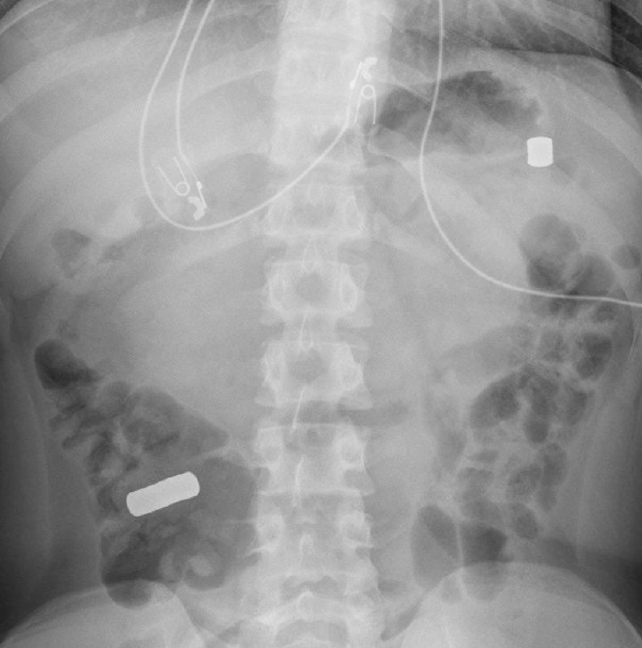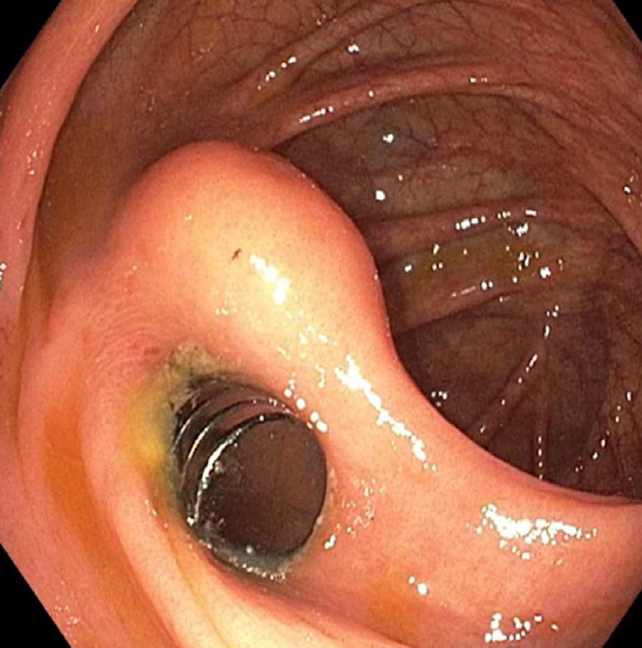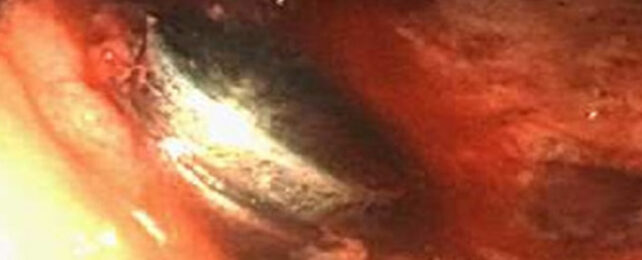Once their tiny bundles of joy reach their teenage years, parents can sigh with relief at no longer needing to monitor every shiny thing they pop into their mouths.
It's not that adolescents don't swallow the occasional pen lid, coin, or battery – but when they do swallow something medically pressing, cases are often deliberate acts that may hint at underlying psychiatric needs.
A case recently reported in the US documents a rather unusual example of an adolescent swallowing more than a dozen magnets, all without his recollection.
The teen's first indication of trouble was painful abdominal cramping, which prompted a trip to a hospital emergency department where scans revealed the presence of metallic objects in his stomach and intestines.

Lacking the specialized equipment needed for a deeper look, the patient was sent to another hospital. Further CT scans and X-rays confirmed the presence of some kind of metallic items, though it would take a few examinations with an endoscope to reveal their true nature.
The object in the teenager's stomach appeared to be a stack of three gray discs, each around 8 millimeters wide (nearly a third of an inch). They looked suspiciously like super-strong neodymium magnets. Embedded in an ulcer in the stomach wall, it was clear the stack had been there long enough to start to cause some damage.

The magnets were removed relatively easily with forceps and a small surgical net, yet further investigation over the next two days showed their work wasn't over yet. More magnets were soon discovered burying their way through the large intestine, where signs of rot were already setting in.
Although three of them could be removed during a colonoscopy, the rest would require surgery, during which a further 15 magnets were uncovered. Several in the large and small intestine had already pinched together and started to erode a hole through the organs.
There's no need to explain the horrendous consequences of a perforated bowel. Fortunately the timely removal of the magnets and some antibiotics prevented the adolescent from experiencing the pain of a hole in his gut leaking contents into his abdomen.
After a six-day stint recovering in hospital, the young man is reportedly doing well, eating and drinking as normal with far less pain.
As rosy as the patient's prognosis is, one last mystery hangs over the whole endeavor – how did the magnets get there in the first place?
Knowing cases of magnet ingestion in teenagers is often deliberate, and a possible indication of an underlying psychological issue, medical staff assessed the patient while he was under their care.
Both the adolescent and his family were adamant it was all an accident, most likely taking place during a sleepwalking episode.
Though swallowing foreign objects while asleep is highly unusual, having an eating disorder that manifests while asleep could be surprisingly common, with one study suggesting as many as one in 20 people could rapidly throw down a meal or snack while partially or fully asleep.
Unfortunately, the ingestion of magnets while fully awake is far too common, especially among young children. The phenomenon is so common – and risks so dire – emergency care providers in the US have warned parents of babies and toddlers to be more vigilant and put their magnets well out of reach of tiny hands.
With this latest case study in mind, keeping strong magnets out of reach of even bigger hands might be worth considering.
This research was published in BMJ Case Reports.
